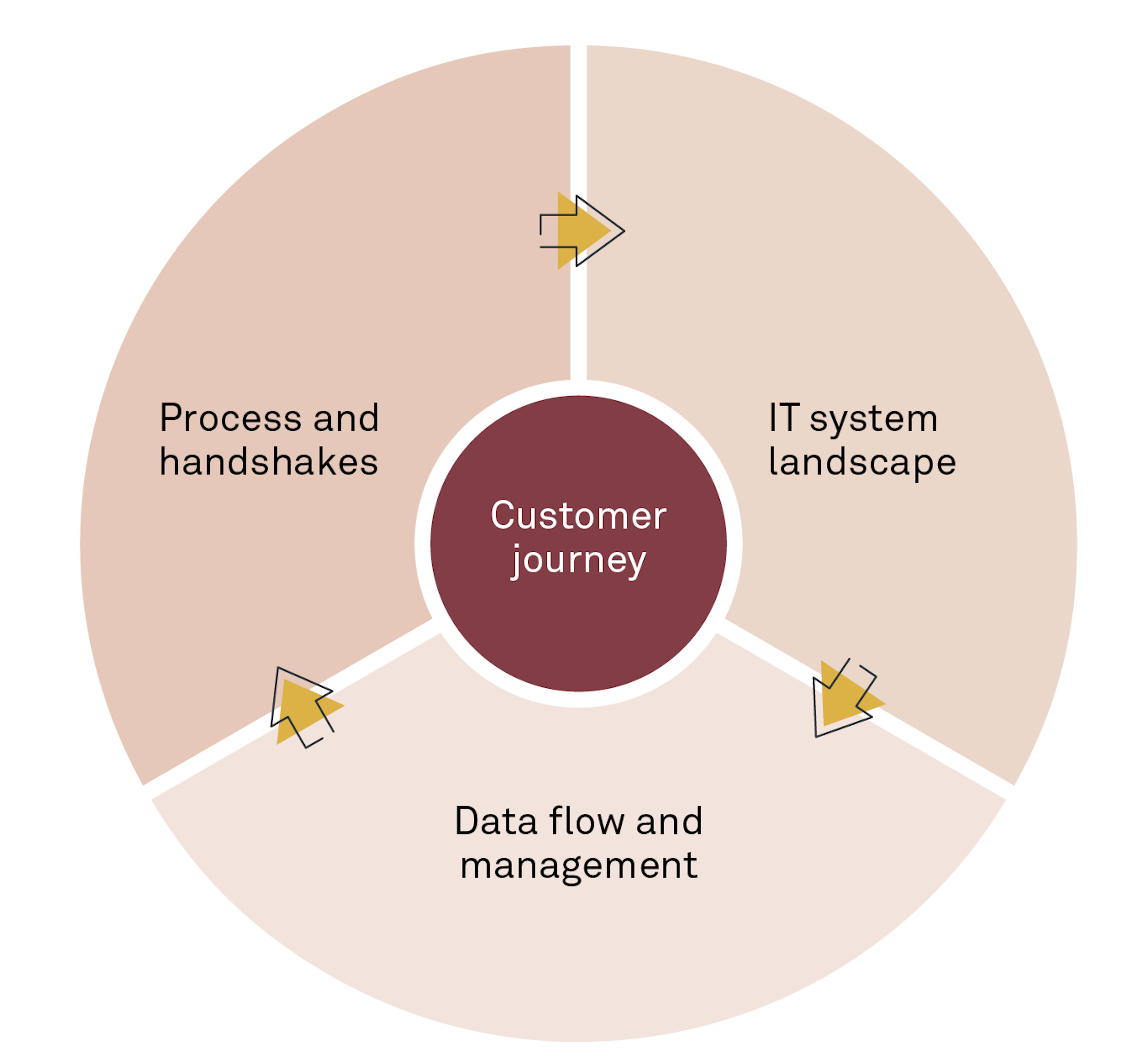7 August 2020
It can be daunting to initiate an order-to-cash (OTC) transformation. We are talking about a process that is literally executing your business model towards your customers and involves most of the functions in your organisation.
OTC is not uncharted waters for most organisations; processes might be in place, and systems might be established to support it. However, the process is often characterised by being informal, decentralised and uncontrolled. Data, documentation and material on decisions, principles and ways of working might therefore exist in the organisation, but they might not be readily available. Navigating this requires a structured approach to your project management of OTC.
Albert Einstein
Zoom in on what you know and diagnose the As-Is
We often jump to making a great solution without spending enough time on the problem. Your OTC aspiration and impact case might define your issues; however, you need to break down your entire process into specific detailed steps and understand the following within each step:
- What happens in this step, and who does it?
- What is the data input to this step, and who provides it?
- What is the output of this step, and who uses it?
- What are the systems used, and how do they interface?
- How much time is value-adding, how much time is wasted, and how often is the step done “first time right”?
These insights are created by engaging with process owners and stakeholders within each specific step and will provide you with an understanding of the handshakes that take place throughout the process and the review of quality and adherence to the collaboration model. Also, you will gain insights into the data flows from one step to the next, and more specifically, whether the data is considered master data (data on customers, products and employees) or transactional data (data on orders, delivery and invoices). The questions you cannot answer will be your pool of issues which need to be addressed and improved in the To-Be solution design.
Henry Ford
Generate ideas and design the To-Be solution design
Having framed the core issues of your OTC process, start by looking at industry best practices, such as the design developed by APQC , and adapt each step to the needs that you and your customers have.
At this point, it is critical to map out the natural variances within the process, e.g. variances in terms of product offerings, order fulfilment types and billing solutions. Decide which variances are needed and which can be simplified and prepare a solution design that will support such variances.
If it was important to understand the key handshakes in your As-Is process, it is even more important in the To-Be design. This is to have a clear understanding of questions such as:
- What input does Sales need to give to the Delivery Team and Invoicing Team once the agreement with the customer has been reached?
- How does the Delivery Team take the order fulfilment forward and ensure that it is compliant with what has been agreed?
- How does the Invoicing Team know when and how much to invoice?
For validation of your To-Be solution design, it is recommended to prepare a prototype that can deliver fast learning from customers and within the organisation. Test your critical assumptions and reverse-engineer your solution design for other options and alternatives. Based on the feedback you receive, you are in the position of deciding what OTC process fits you and your customers best.
What are the building blocks?
In both the As-Is diagnostics and the To-Be process design, you will map out the key building blocks for a successful OTC process:
- Process and handshakes: Ensure that your process and handshakes are mapped out, standardised and well understood on a deep and detailed level. The link to other end-to-end processes such as sales and operations planning and especially the upstream commercial processes of idea-to-market and market-to-order is important to define and establish. A solid governance framework will support your new of way of working with clear roles, responsibilities and performance measures driving the desired behaviour in each step.
- IT landscape: The relationship between all involved IT systems is to be established in a system landscape that is well structured, coherent and easy to navigate. Does OTC optimisation mean having to roll out a new ERP system? If no, you can bring order and structure to the IT landscape you have.
- Data flow and management: Distinguish between your master and transactional data. Have your master data clearly structured, defined by a certain set of attributes and stored in a system that interfaces across your IT system landscape. To the extent possible, organise and standardise your contracts (these should also be stored, easily accessible and duly signed). Map your offerings and bundle of offerings and develop price list and a discount methodology to navigate efficiently from commercial activities in the market-to-order process to invoicing in order-to-cash.
These building blocks will support you and your organisation in building insights of the current process when generating ideas to solve your defined issues and when establishing and testing a solution design worthy of you and your customers.







